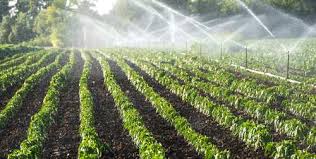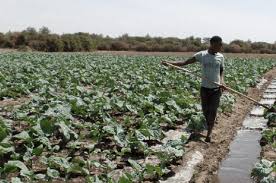Positive Environmental Impacts of Agriculture include its potential to enhance biodiversity, improve soil health, sequester carbon, and conserve water. Although agriculture is sometimes linked with environmental issues, sustainable farming practices can transform agriculture into a force for ecological benefit.
By adopting methods like agroforestry, crop rotation, and organic farming, agriculture can reduce greenhouse gases, restore ecosystems, and help combat climate change.
These practices capture carbon dioxide from the atmosphere and store it in soil and plants, which not only helps to mitigate climate impacts but also enriches the soil with organic matter.
Healthier soils are better at retaining water, reducing the risk of erosion, and supporting diverse plant and animal life.
In addition to its role in carbon sequestration, agriculture fosters biodiversity by creating habitats for a variety of species. Sustainable practices such as integrated pest management, crop diversity, and polyculture farming promote a balanced ecosystem where insects, birds, and animals can thrive.
This biodiversity is vital for pollination and natural pest control, reducing the need for synthetic pesticides and fertilizers.
By conserving native species and protecting endangered ones, agriculture plays a crucial role in maintaining genetic diversity, which is essential for adapting to changing climates and ensuring food security.
Water conservation is another positive environmental impact of sustainable agriculture. Techniques like drip irrigation, rainwater harvesting, and the use of wetlands help manage water efficiently and protect natural water resources.
These methods reduce water waste, minimize runoff, and filter pollutants, ultimately leading to cleaner rivers and streams.
Wetlands on farmlands act as natural water purifiers and provide habitats for various aquatic species, supporting biodiversity beyond the immediate farming area.
Regenerative agricultural practices are also effective in restoring degraded lands. No-till farming, cover cropping, and composting improve soil structure and fertility, helping the land to recover from years of erosion and overuse.
These practices increase the land’s ability to absorb rainfall, reduce surface runoff, and improve groundwater levels, making the soil more resilient to extreme weather events.
Restored lands are more productive and environmentally sustainable, benefiting both farmers and the ecosystems surrounding their farms.
Agriculture can have numerous positive environmental impacts when approached sustainably. By improving soil health, supporting biodiversity, conserving water, and capturing carbon, sustainable farming methods show that agriculture has the potential to be a key player in environmental conservation.
As global challenges like climate change and resource depletion become more pressing, the role of sustainable agriculture in building a healthier planet becomes increasingly important.
Enhancing Biodiversity

1. Diverse Crop Cultivation: Agricultural practices that promote the cultivation of diverse crop varieties can enhance local biodiversity, providing habitats for various species.
2. Agroforestry Systems: Integrating trees with crops and livestock creates a more diverse ecosystem, improving habitat for wildlife and increasing resilience to pests and diseases.
3. Pollinator Support: Practices such as planting flowering crops and maintaining natural habitats can support pollinators, which are essential for many crops and overall ecosystem health.
Soil Health Improvement
1. Organic Matter Addition: Sustainable agricultural practices, such as cover cropping and composting, enhance soil organic matter, improving soil structure and fertility.
2. Reduced Soil Erosion: Implementing no-till and conservation tillage practices can reduce soil erosion, preserving valuable topsoil and maintaining soil health.
3. Nutrient Cycling: Crop rotation and diversified cropping systems promote nutrient cycling, reducing the need for synthetic fertilizers and enhancing soil fertility.
Carbon Sequestration
1. Carbon Storage in Soil: Agricultural practices that enhance soil health, such as agroecology and organic farming, can increase the soil’s capacity to sequester carbon, mitigating climate change.
2. Perennial Crops: Growing perennial crops, which have deeper root systems, can enhance carbon storage in the soil compared to annual crops, contributing to climate change mitigation.
3. Reforestation and Afforestation: Integrating trees into agricultural landscapes can sequester carbon while providing additional benefits like shade and habitat.
Read Also: Full Sun Flowers: All You Need To Know About
Water Conservation Practices

1. Efficient Irrigation Techniques: Implementing technologies like drip irrigation and rainwater harvesting can significantly reduce water usage in agriculture, promoting sustainable water management.
2. Soil Moisture Retention: Practices such as mulching and cover cropping help retain soil moisture, reducing the need for frequent irrigation and conserving water resources.
3. Protecting Watersheds: Sustainable agricultural practices can protect and enhance watersheds, maintaining water quality and availability for both agricultural and non-agricultural uses.
Sustainable Farming Techniques
1. Crop Rotation: Rotating different crops on the same land helps maintain soil fertility, reduces pest buildup, and improves biodiversity.
2. Organic Farming: Avoiding synthetic pesticides and fertilizers encourages a healthy ecosystem, promoting soil and plant health while reducing environmental impact.
3. Integrated Pest Management (IPM): Combining biological, cultural, and chemical practices minimizes pesticide use and promotes a balanced ecosystem.
Reduction of Greenhouse Gas Emissions
1. Sustainable Practices: Practices like cover cropping and conservation tillage can reduce soil disturbance, which in turn lowers carbon dioxide emissions.
2. Livestock Management: Implementing better manure management and feeding practices can significantly reduce methane emissions from livestock.
3. Agroforestry: Integrating trees into agricultural systems can help absorb carbon dioxide, contributing to overall greenhouse gas reduction.
Read Also: Antirrhinum Flowers: All You Need To Know About
Contribution to Ecosystem Services

1. Pollination: Agriculture supports natural pollinators, which are crucial for the production of many crops and the maintenance of biodiversity.
2. Soil Formation and Fertility: Agricultural practices contribute to soil formation and maintenance of soil fertility, which are essential for sustainable food production.
3. Water Filtration: Healthy agricultural ecosystems can act as natural filters, improving water quality and reducing runoff.
Community and Economic Benefits
1. Job Creation: Sustainable agricultural practices can create job opportunities in rural areas, contributing to local economies.
2. Food Security: By promoting diverse and sustainable farming systems, agriculture can enhance food security and resilience in communities.
3. Local Economies: Supporting local agriculture can stimulate local markets and economies, providing fresh produce and reducing transportation emissions.
Agriculture faces various environmental challenges, it can also provide numerous positive impacts. By enhancing biodiversity, improving soil health, sequestering carbon, and conserving water, sustainable agricultural practices can play a crucial role in fostering a healthier environment and promoting ecological balance.
Do you have any questions, suggestions, or contributions? If so, please feel free to use the comment box below to share your thoughts. We also encourage you to kindly share this information with others who might benefit from it. Since we can’t reach everyone at once, we truly appreciate your help in spreading the word. Thank you so much for your support and for sharing!
Read Also: Styrofoam Recycling Comprehensive Guide






